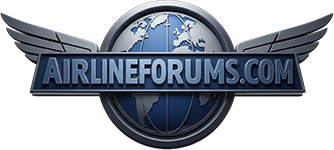Jim, I'm curious, I have heard from the pilots to the FA's, to the ground staff that we pay consistently less than other "major" airlines. Is this true? If so why is our CASM still high? I know that employees gave up a lot in the two BK's. Why would the CASM (ex fuel) remain so high?
I can only speak for the pilots and even there only on pay scale since I'm not familiar with the other contractual provisions of the other airlines.
The East pay scales are at or near the bottom for same/equivalent equipment if you exclude the RJ providers and such airlines as Spirit and Allegient. West pay scales are higher. Of course, pay scales are only part of the pay equation - longevity and contractual limits on monthly flying are the others.
The CASM is so high because of potentially 3 major factors, which depending on which airline you're comparing US to. An inefficient operation costs more, and a hub/spoke operation is inherently an inefficient operation. Even between hub and spoke carriers, there are differences in efficiency - the rest have "dehubed" their hub operations to one degree or another, but not US. That means US needs more gates, more people, more equipment to work X flights at PHL than CO does to work the same number of flights at EWR, for example. More gates, equipment, and people cost money, even if the per person cost is less that the other carrier.
Operating a relatively short haul operation in the Northeast. CASM goes up as stage length (the average distance covered by an airline's flights) does down. Shorter state length means the average airplane is sitting on the ground more per day- costing money but producing no revenue. So airlines with a longer stage length have a built in CASM advantage. The Northeast with it's congestion causes more delays, which cost money. Airplanes sitting on taxiways have a cost but produce no ASM's - a CASM of infinity. The more of that an airline does the higher the CASM.
Being a relatively small airline with too many fleet types. CO has 3 basic fleet types - 777, 757/67, and 737 - with the smallest number of planes in any of those fleet types being 20. US has 5 fleet types, with three of those having less than 20 planes (when the 10 E190's have all been transfered). Multiple fleet types cost money - training, maintenance, ground equipment, etc (that's a biggie for WN with only 1 fleett type).
Finally, US has the largest percentage of ASM's flown by Express operaters in the industry (DL used to be the leader but US passed them). Those are high cost ASM's (17.27 cents per ASM), which bring up the average CASM. This is another big advantage for WN. Even AA, which has a higher mainline CASM than US, has an advantage due to their relatively small (for their size) Express operation.
If you are really interested in getting something of a "nuts and bolts" look at cost comparisons (as well as many other comparisons) go to MIT's Airline Data Project website (you can Google it). They have taken the data submitted to the BTS and done the analysis necessary to provide those comparisons. Of special relevance to this discussion is the employee cost and productivity numbers. For example, they show US as having the lowest "cockpit" (pilot) cost per year, but the highest "cockpit" cost per block hour of the legacy carriers (i.e - pay is lowest but systemic inefficiencies cause cost per block hour to be the highest). One note about their site - they only give annual data (2008 is the latest) since that eliminates the ups and downs that would appear in a quarterly analysis because of different schedules for making interest payments, airplane lease payments, heavy maintenance schedules, etc between airlines.
Jim


